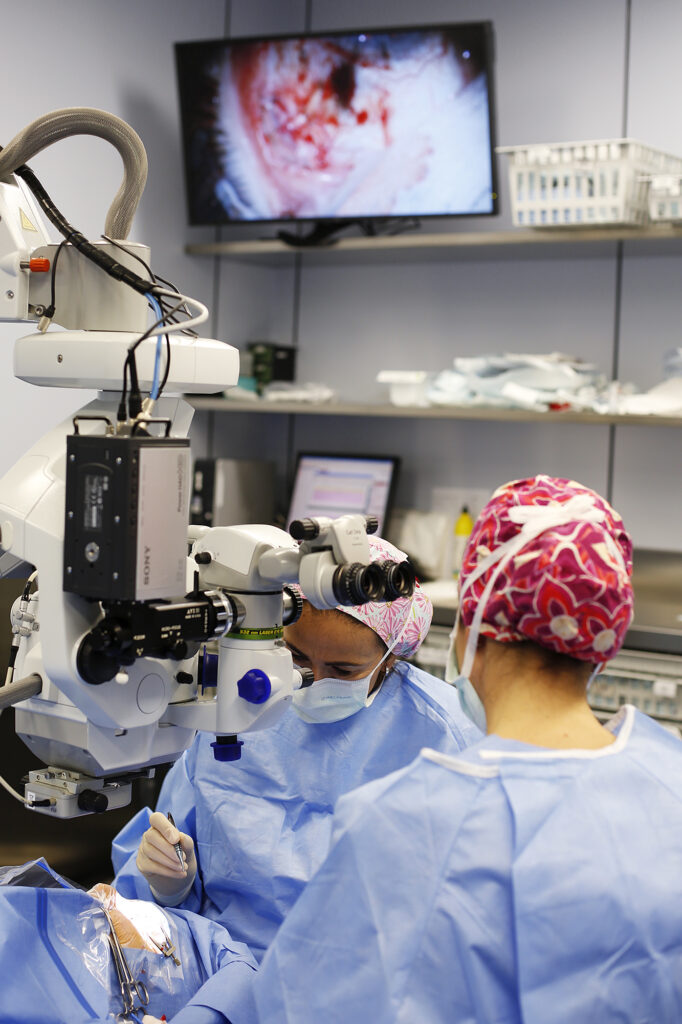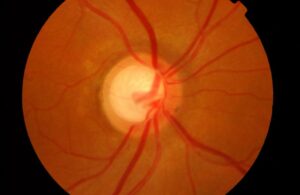Treatments
Non-penetrating deep sclerectomy

What is non-penetrating deep sclerectomy?
Non-penetrating deep sclerectomy (NPDS) is a drainage surgery we use to allow the aqueous humour (fluid that nourishes the eye) to exit the eyeball. Thus, we prevent it from accumulating and, consequently, increasing intraocular pressure, hence irreversibly damaging the optic nerve in patients with glaucoma.
With this goal, the procedure consists of making a small partial incision in the sclera (white part of the eye) to expose a very thin membrane, called trabeculo-descemetic membrane, which allows the aqueous humour to escape through it. Next, our surgeons apply medication to prevent the drainage from closing upon wound healing and, depending on each case, insert intrascleral implants (generally resorbable) to keep the drainage path open and allow the aqueous humour to exit.
NPDS promotes physiological drainage without sudden drops in intraocular pressure, which reduces the risk of complications. It is also less invasive than trabeculectomy, the drainage surgery classically used for glaucoma.
Eye diseases treated by non-penetrating deep sclerectomy
Non-penetrating deep sclerectomy is usually indicated if you have open-angle glaucoma and conservative therapies (usually drops) or laser are insufficient to adequately control your intraocular pressure, so we must resort to surgery.
For us to be able to perform this procedure with guarantees, your conjunctiva (the vascularised membrane that covers the eye surface in its anterior part) must not show any irregularities and must be in good condition. Furthermore, the technique is not indicated in case you have anatomical alterations in the drainage angle (the area where the iris and the sclera meet) or to treat closed-angle glaucoma. Therefore, a good study and prior diagnosis are essential.
Recovery
At the Miranza clinics, we are committed to minimally invasive procedures, which allow us to achieve the desired effectiveness with the least possible impact on the eye structures. In the case of non-penetrating deep sclerectomy, we perform it under local anaesthesia and sedation and, after about 45 minutes of surgery, you will be able to go home without having to be admitted. We will prescribe antibiotic and anti-inflammatory drops to avoid infection and promote the recovery of the tissues that were operated on and we will schedule the appropriate check-ups for you. If during the first weeks you notice blurred vision, you should not be alarmed, as this is a frequent side effect after this surgery and usually disappears over time.
